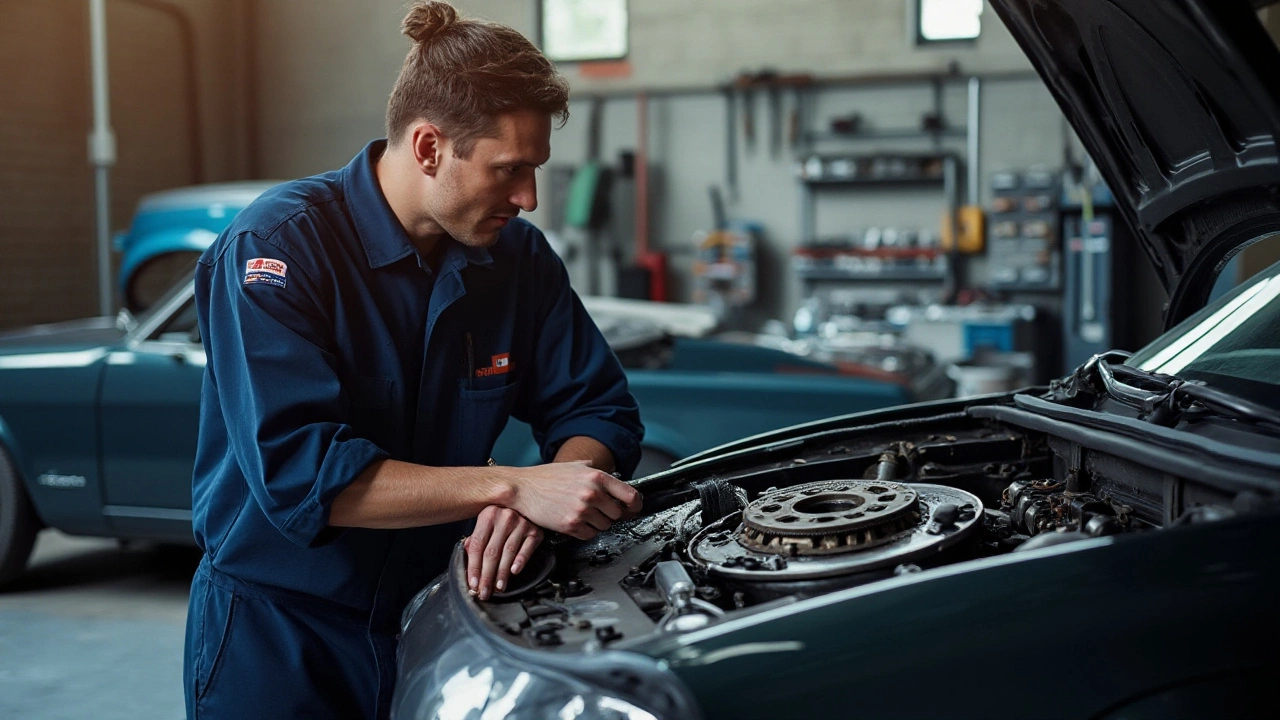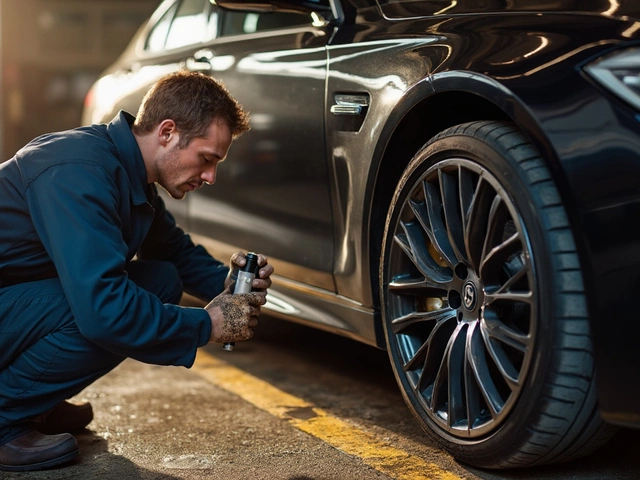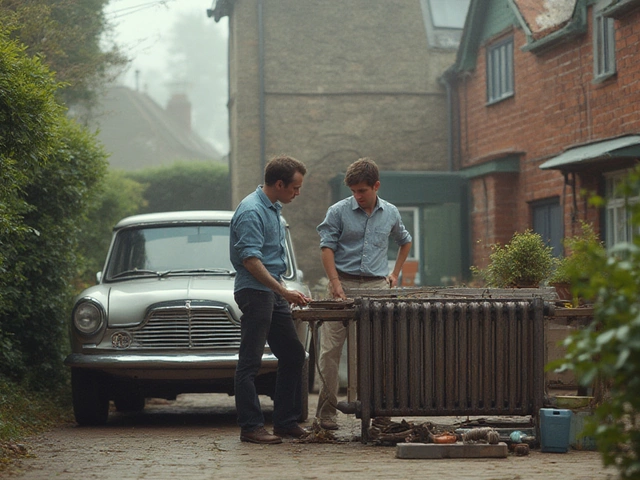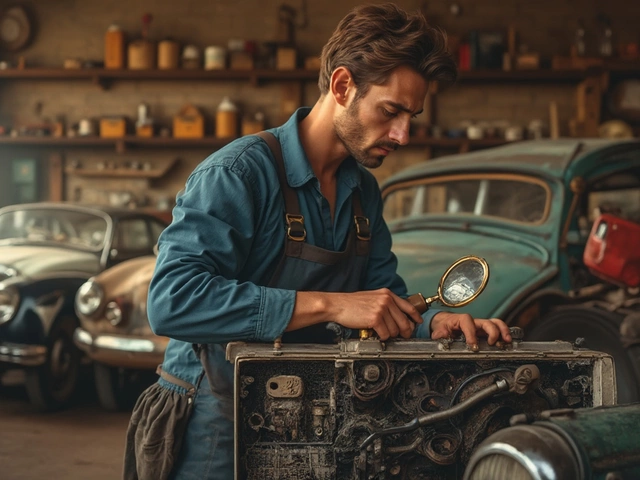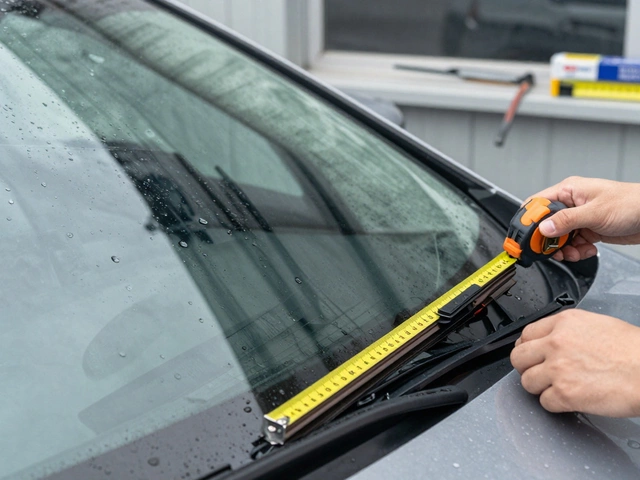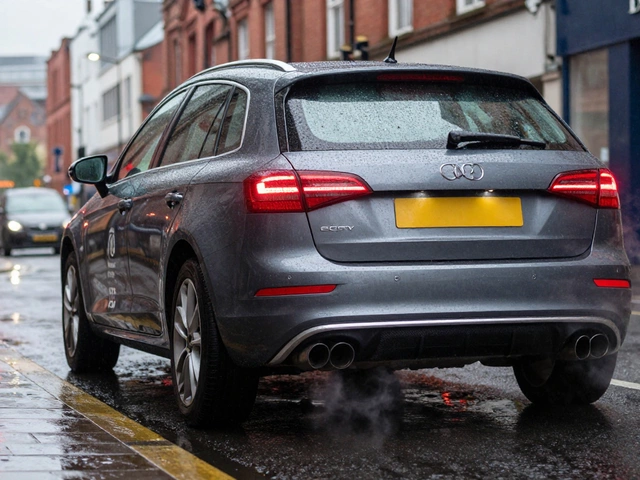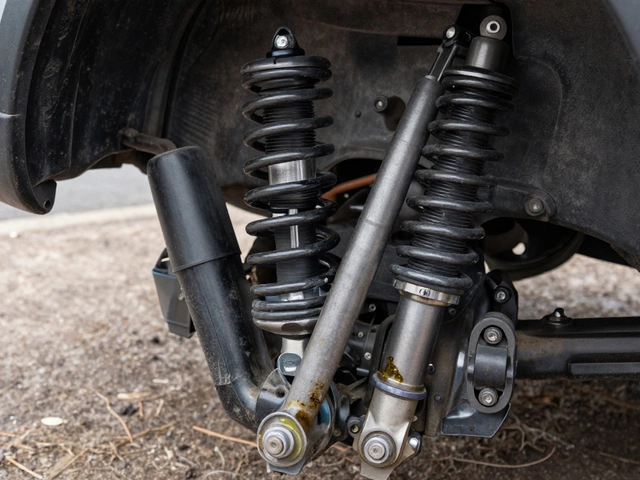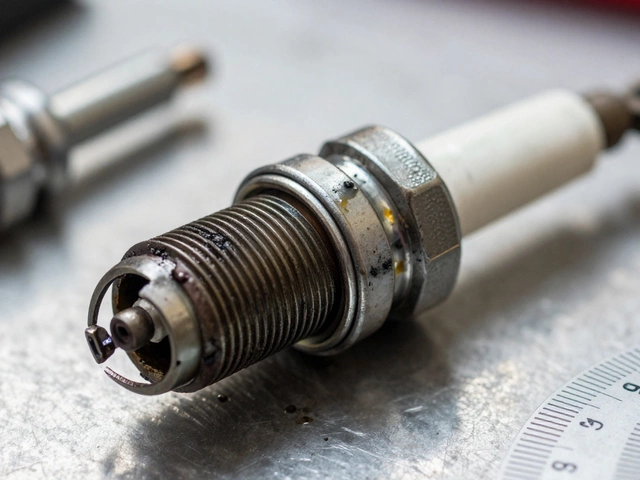Troubles with your car’s clutch can make driving less smooth and more anxiety-inducing. A slipping clutch, in particular, might feel like your vehicle has lost its edge, leading to decreased power and rising RPMs without the desired acceleration. Figuring out whether your clutch can be tightened—or if it's time for a replacement—can make a world of difference for both your ride and your wallet.
You might wonder if you can just adjust the clutch when it starts to slip. It's a common issue, and we're here to dive into what makes a clutch slip and what you can do about it. By understanding the symptoms and the potential solutions, you'll be better equipped to handle this automotive hiccup effectively.
The clutch isn't just a pedal. It's a complex system of parts working together to deliver your car’s power from the engine to the wheels. Let's take a closer look at what's happening under the hood and what steps can be taken to remedy this all-too-common problem.
- Understanding Clutch Mechanics
- Symptoms of a Slipping Clutch
- Causes and Diagnosis
- Possible Solutions and Tightening Techniques
- When to Seek Professional Help
Understanding Clutch Mechanics
When it comes to automobile systems, the clutch is a key player. It acts as the bridge between the engine and transmission, allowing you to change gears smoothly. The clutch connects and disconnects the engine from the wheels, making it essential for starting, stopping, and shifting gears. This mechanism endures a great deal of wear and tear over time, which is why becoming familiar with its workings is important for any vehicle owner.
The average clutch system consists of several parts, including the clutch disc, pressure plate, flywheel, and release bearing. The flywheel is attached to the engine, while the clutch disc connects to the transmission. When you press the clutch pedal, the pressure plate lifts the clutch disc away from the flywheel, breaking the connection and allowing you to change gears. As you release the pedal, the pressure plate reapplies the force, and the clutch disc re-engages with the flywheel.
Interestingly, the concept of the clutch hasn't changed much since its inception. Historical records indicate that concepts similar to modern clutches can be traced back to the 1800s when early automobiles were first developed. These early clutch systems faced many issues with heat and pressure, much like today's systems, but technological advancements have made them much more efficient and durable.
There are various types of clutches, including single plate clutches, multiple plate clutches, and hydraulic clutches. More modern vehicles may even feature dual-clutch transmission systems that offer faster and more efficient gear changes. A hydraulic clutch, for example, utilizes fluid for movement, providing a lighter, smoother operation compared to its mechanical counterparts.
"The clutch is the unsung hero of manual transmission vehicles," says automotive expert John Smith. "Without it, your car couldn't channel the engine's power to the wheels effectively."
In simpler terms, understanding how your car's clutch works can truly empower you. Whether setting off on a long road trip or simply driving to work, knowing this mechanism can help you identify potential issues early, thus avoiding larger problems down the road. For instance, consistent slipping is often a tell-tale sign that something is amiss in the clutch assembly, and knowing how the clutch affects your vehicle's performance can save you time and money on repairs and replacements. It’s also beneficial when choosing between different vehicle models and their clutch types, ensuring you get the best fit for your driving style.
Symptoms of a Slipping Clutch
A slipping clutch can really throw a wrench in your driving experience, but recognizing the symptoms early can save you from bigger headaches down the road. One of the most telling signs is a noticeable decrease in performance efficiency. Drivers often report a sensation as if the car has lost its usual power, despite the engine revving higher. You'll see the RPMs climbing quickly without the corresponding boost in speed, almost like the vehicle is struggling to catch its breath.
Imagine pressing the accelerator, but instead of thrilling speed, the car seems to groan in response. This sensation is akin to feeling more roar from the engine, but less road conquered. Another precursor might be a burning smell, much like the odor of overheated brakes, which usually indicates that the clutch is overheating due to the slippage. This smell wafting into the cabin can instantly set alarm bells ringing in any driver’s mind.
One might also notice difficulty when attempting to engage the gears. The shift might feel sticky, requiring more effort or sometimes even refusing to slot into the desired gear at all. Slippage is often most evident in the higher gears like fourth or fifth, where the strain is usually maximum. And of course, the clutch pedal itself might feel different—softer than usual, or you might need to push it further down to engage the gears. A vehicle's ability to go up steep hills might suffer, too, leaving you stuck in lower gears as the power just doesn't seem to translate effectively to the wheels.
Some experts in auto repair suggest regularly listening to your car. Any unexpected noises that emerge, like a grinding or chattering sound when the clutch is engaged, can be an early indicator that action might be required. It's akin to your car whispering warnings that something within its mechanical heart isn’t quite right.
"You can usually push your clutch a bit further than other parts, but ignore its cries for help too long and it might just pack up altogether," says renowned automotive engineer John Lambert.
Just like the flickering warning lights on a dashboard, these symptoms serve as harbingers for what's to come if the issue remains unaddressed. Recognizing these signs gives you the best chance to tackle the problem head-on with either clutch repairs or a complete replacement. Knowledge, in this case, is certainly power—both for you and your vehicle’s longevity.

Causes and Diagnosis
A slipping clutch often signals deeper issues within your vehicle, and understanding the root causes can save you both time and money. One of the primary reasons behind a slipping clutch is wear and tear. Clutches are designed to endure a significant amount of friction over time. However, every start, stop, and gear change takes its toll. Over the years, the clutch friction material wears down, losing the ability to grip effectively between the engine and the transmission, leading to the dreaded slip.
Another common cause of clutch slippage is a misadjusted cable in vehicles utilizing cable-actuated clutches. When the cable is too tight, it doesn't allow the clutch to disengage properly, causing partial engagement and slip. On the flip side, hydraulic systems might be plagued with leaks or low fluid levels, leading to insufficient pressure to engage the clutch fully. Such hydraulic issues result in similar problems, showing symptoms that mimic a worn-out clutch kit.
Diagnosing the problem involves a blend of feel, sound, and sometimes, smell. A slipping clutch frequently complains through a burning odor, akin to burnt toast, which stems from friction material being excessively heated by constant slipping. As for the auditory cues, you might hear unusual noises when the clutch is engaged. These sounds can vary from grinding to whining, often an indicator of more serious issues at play, like damage to the clutch fork or input shaft.
"Regular maintenance and timely diagnosis can vastly prolong the life of your clutch, saving you from more costly repairs," notes automotive expert, Mike Allen from Popular Mechanics.
Testing your vehicle for a slipping clutch can be done quite easily. While in a safe area, try accelerating hard while in a higher gear. Notice the revs—if they climb while the speed barely changes, then you have a problem on your hands. This phenomenon is caused by the clutch failing to transmit the power effectively to the wheels, creating a loss of acceleration or power.
Some rare causes might involve oil or grease contamination on the clutch disc. This happens when oil leaks from the engine or transmission find their way onto the clutch components, reducing friction and effectiveness. Such contamination requires cleaning of the clutch or even replacement of the contaminated parts, a task best left to professionals unless you have a keen understanding of the mechanical workings.
In diagnosing, a professional mechanic might use a pressure plate loading tool to ascertain whether the pressure plate is functioning correctly. Oftentimes, they resort to electronic diagnostic tools to check for fault codes within the system that reveal hydraulic issues or electronic sensor failures that might impede clutch performance.
The complexity of a slipping clutch problem often necessitates a methodical approach to determine the exact cause. Whether it's extensive wear, hydraulic imbalances, or contamination issues, pinpointing the problem precisely will guide you towards the best course of action for repair or replacement.
Possible Solutions and Tightening Techniques
For those grappling with a slipping clutch, the first impulse might be to see if there’s an easy fix by tightening. However, it's crucial to first identify whether the clutch in question is hydraulic or cable-operated, as the approaches differ. In many modern vehicles featuring hydraulic clutches, adjustments aren’t typically possible. Instead, these systems often self-adjust, with the master and slave cylinders allowing for seamless operation right until the components start wearing out. On the other hand, older models or certain budget-friendly cars might have cable-operated systems which could be tweaked to some extent.
For cable clutches showing slippage, the cable tension might be adjustable. This requires popping open the hood and checking for an adjustment mechanism. Usually, it involves a threaded shaft attached to the cable. A few twists with a wrench might bring back the needed tension. However, this is a temporary fix. Clutch misalignment or excessive wear won't vanish with just an adjustment. Keep in mind that the clutch kit components are eventually consumable parts, much like brake pads, designed to wear out over time.
If the issue persists regardless of adjustments, consider evaluating the clutch disc, pressure plate, and release bearing for wear. Symptoms such as strange noises or a spongy feel often indicate that replacements, not adjustments, are necessary. A clutch repair might mean dropping the transmission, which can be a laborious task. According to seasoned mechanics, DIY enthusiasts can tackle a clutch replacement over a weekend.
"Successful clutch repairs involve a balance of patience, precision, and the right tools," says renowned mechanic Tom Johnson, author of 'Garage Wisdom.'
Regular maintenance is key to extending your clutch's life. Consider employing proper shifting techniques—avoiding resting your foot on the clutch pedal (a practice casually known as ‘riding the clutch’) or aggressive gear changes, both culprits pointed out by drivers across online forums. Additionally, if you live in a city with heavy traffic, try not to keep your car in gear while idle. Instead, use neutral and engage the clutch only when necessary.
In some discussions, vehicle enthusiasts suggest alternative solutions like synthetic clutch fluids, which promise better lubrication, potentially improving clutch interaction. While these solutions might provide short-term relief, they don’t replace the inevitable need for a new clutch, especially if slippage persists. As they say in the auto world, preventive care often surpasses reactive measures.
For those contemplating a repair themselves, ensure you have access to a handy toolkit and possibly a hoist or sturdy jack. Depending on the make and model, removing the transmission could require navigating complex undercarriages and reconciling tightly packed engine bays. Be vigilant, ensure to support the engine, and above all, follow the repair manual for your specific vehicle body type. Adequate knowledge combined with well-planned execution can save substantial repair costs while adding an empowering notch to your skill belt.
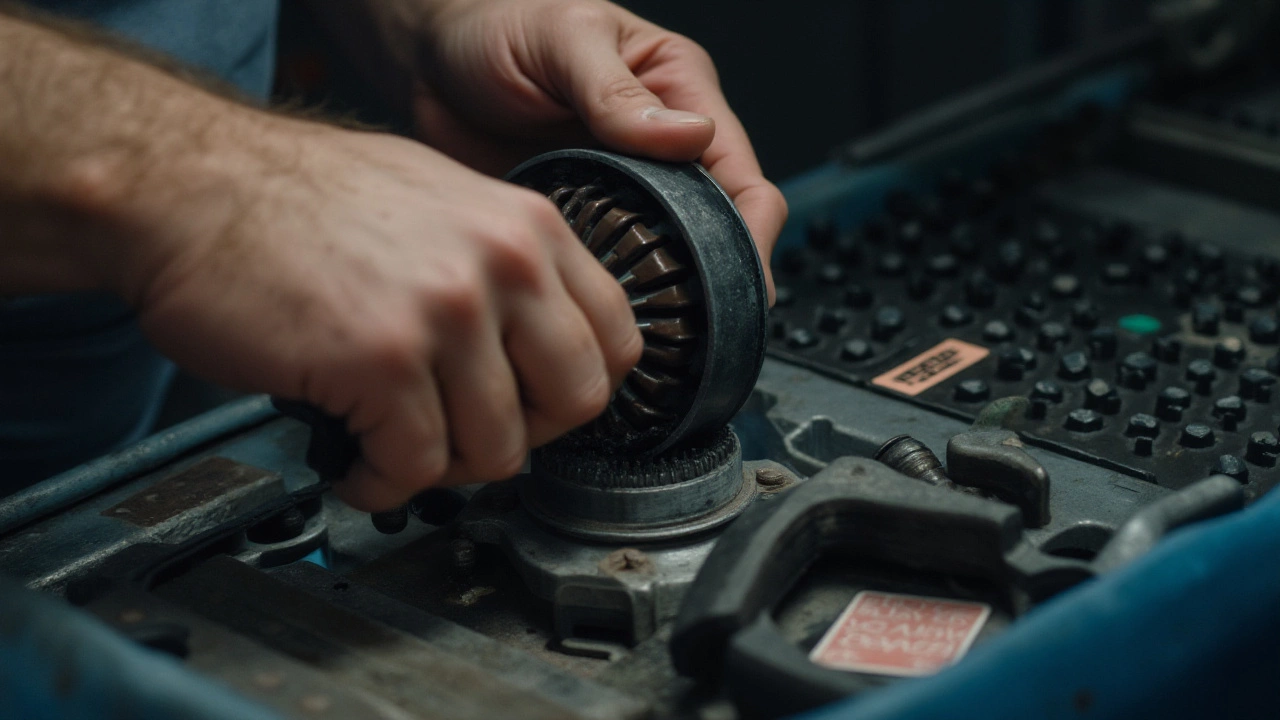
When to Seek Professional Help
There comes a point when it’s necessary to acknowledge that DIY efforts might not suffice for your slipping clutch. While minor adjustments and quick fixes might seem tempting, ongoing issues typically indicate deeper problems that require expert analysis. The moment you find your car having recurrent clutch slipping, despite basic adjustments and tweaks, it's wise to consult an experienced mechanic. As clutch mechanisms are intricate with numerous interconnected parts such as the pressure plate, clutch disc, and release bearing, missing out on any detail can exacerbate the problem and even lead to more costly repairs down the line.
Pay special attention if you experience chattering noises, unusual vibrations, or a burning smell emanating from your clutch area. These are red flags that often suggest serious underlining issues that might not be visible to the untrained eye. The mechanics at this stage employ diagnostic tools not typically available to home hobbyists and can pinpoint the exact nature of the malfunction. They perform pressure tests, inspect wear surfaces, and ensure that components align perfectly, providing reassurance that the entire drivetrain functions smoothly. Failure in properly diagnosing and addressing the problem on your own could potentially damage not only the clutch but also related components such as the flywheel or transmission.
Moreover, if there is a history of frequent clutch replacements or a substantial mileage, wear and tear might have reached a point where it's beyond basic tightening or adjustment. Here, professional guidance becomes indispensable. A knowledgeable technician can provide not only repairs but also maintenance advice that can prevent future incidents. Through professional service, you gain insight into preventive measures, ensuring you extract maximum longevity from your clutch system. In some cases, especially for high-performance or specialty vehicles, engaging a professional allows access to specialized parts or adjustments that are critical for preserving vehicle value and performance.
"An ounce of prevention is worth a pound of cure," says renowned automotive expert Jeremy Clarkson. Addressing clutch issues early with professional insight can prevent them from escalating into unmanageable problems.
There are also safety considerations. Driving with an improperly working clutch isn't just uncomfortable but poses potential safety risks, particularly when navigating steep inclines or participating in heavy traffic, where precise control over power delivery is crucial. A stalled vehicle or sudden loss of power-induced grip can create hazardous situations on busy roadways. Thus, engaging professionals ensures peace of mind while prioritizing your safety and that of others on the road.
If you notice any deterioration in vehicle performance, especially lugging or slipping during acceleration, don’t wait until your clutch completely fails at the most inconvenient time. Availing oneself of professional expertise can deliver accurate repairs that accord with the car manufacturer's specifications, thus preserving warranty terms as well. With proper maintenance handled by skilled professionals, you'll find the longevity and efficiency of your vehicle maintained, allowing a focus on the pure joy of driving without the nagging worry of mechanical failures looming.
